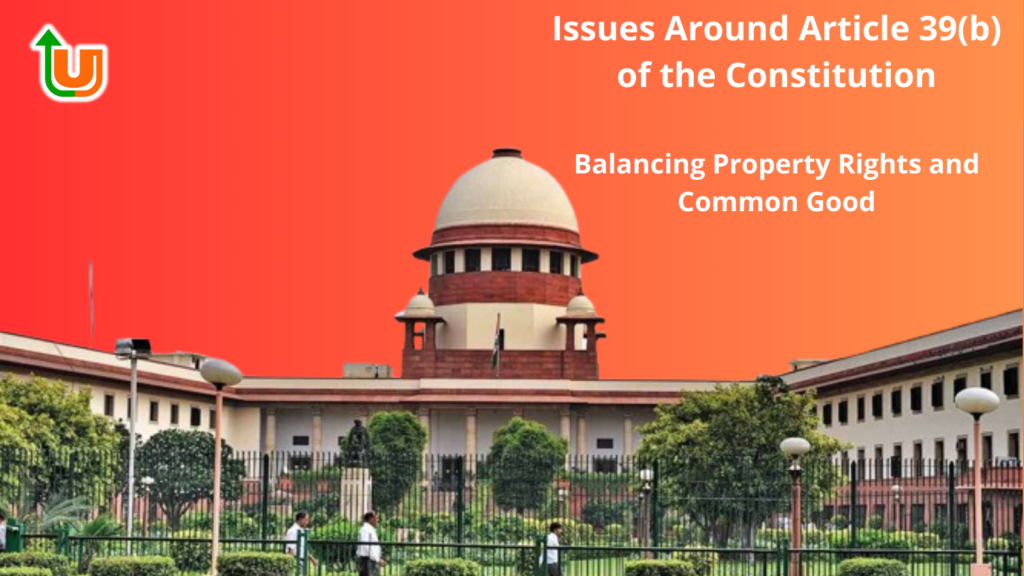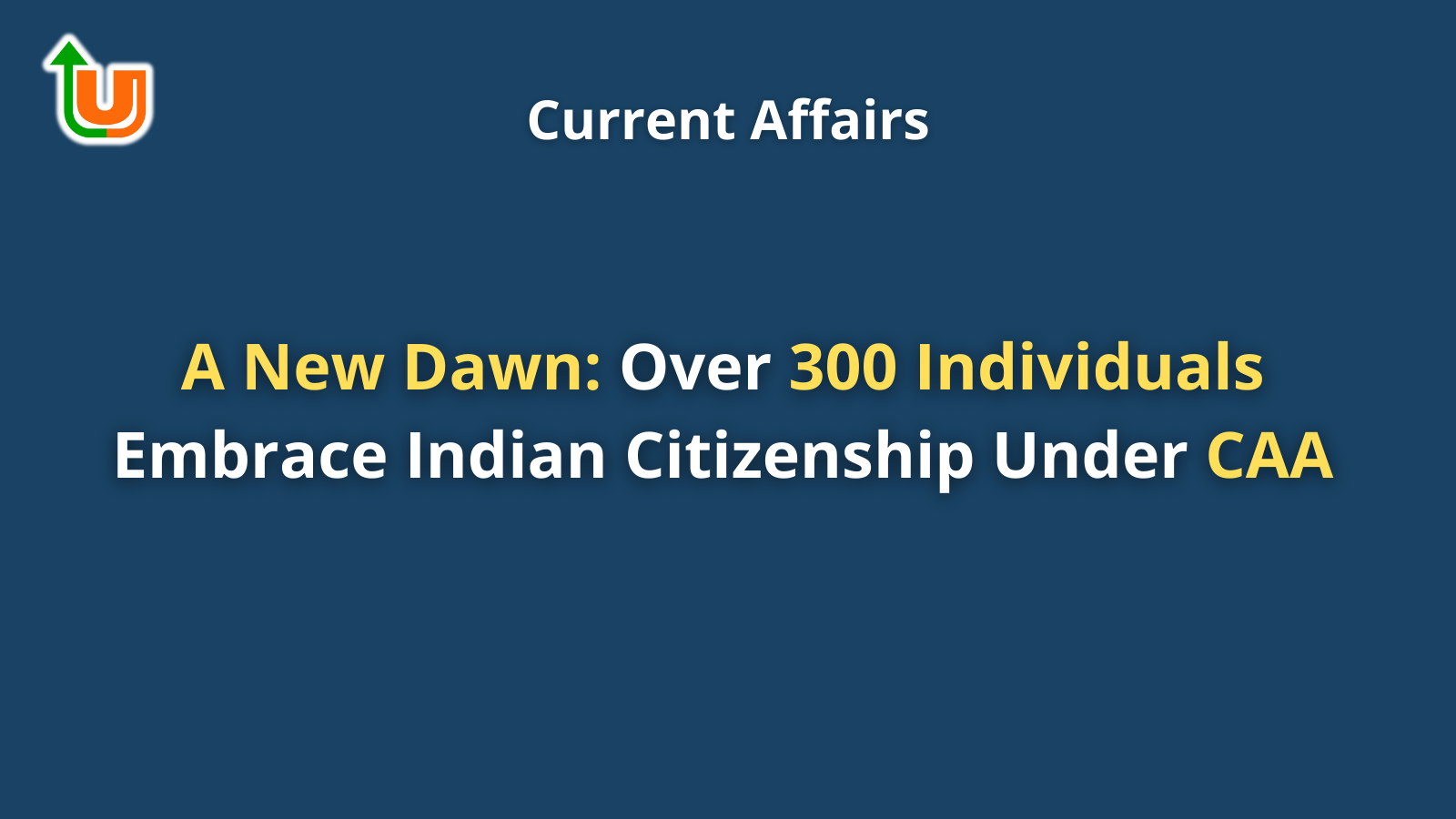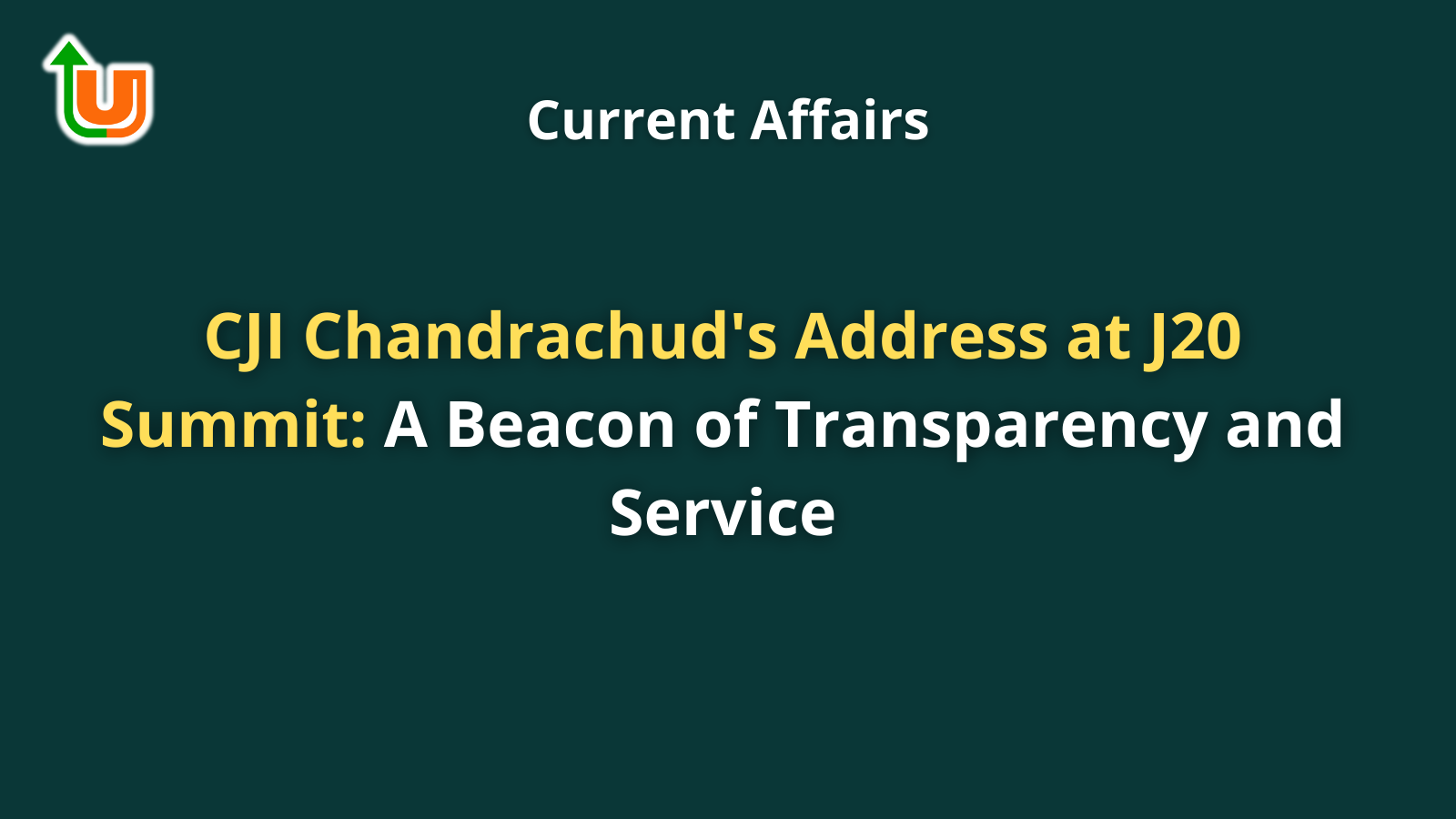Article 39(b) of the Indian Constitution is a crucial Directive Principle of State Policy. It aims to establish a welfare state and promote social and economic justice. However, interpreting this provision has raised significant questions regarding property rights, resource distribution, and the delicate balance between individual rights and societal welfare.

The Key Issue
- A nine-judge bench of the Supreme Court, led by Chief Justice of India D.Y. Chandrachud, is currently deliberating on the interpretation of Article 39(b).
- The central question is whether the phrase “material resources of the community” includes privately-owned resources.
- Specifically, can the government redistribute private property for the common good under Article 39(b)?
Historical Context
- In the 1978 Ranganatha Reddy case, conflicting views emerged:
- Majority opinion: Private property is not part of community resources.
- Dissenting view by Justice Krishna Iyer: Private property should be considered community resources.
- In 2002, a nine-judge bench was formed to resolve this conflict.
Arguments Presented
- Solicitor General Tushar Mehta’s stance:
- If private property contributes to the common good, it may fall under Article 39(b).
- Not all private property qualifies as community resources.
- Chief Justice’s perspective:
- Some privately-owned resources impact public interest and require state regulation.
- However, interpreting Article 39(b) as purely socialist or communist would be inconsistent with constitutional protections for private property and business rights.
Interpreting the Constitution Today
- The Court emphasizes:
- Interpreting the Constitution in the context of India’s current economic landscape.
- Balancing Article 39(b) with the need to attract private investment.
- Nuanced interpretation to protect both private rights and societal welfare.
Implications and Future Decision
- The Court’s decision will clarify the interpretation of Article 39(b) and its implications for private property rights.
- It will impact economic policies, resource distribution, and the delicate equilibrium between individual and collective interests.
View More Sources
(1) What are Issues Around Article 39(b) of the Constitution?. https://www.gktoday.in/what-are-issues-around-article-39b-of-the-constitution/.
(2) Article 39(b) of India’s Constitution: Resource Distribution. https://www.sriramsias.com/upsc-daily-current-affairs/article-39b-of-indias-constitution-resource-distribution/.
(3) Can Private Property Be Used As a Community Resource? What’s Article 39 …. https://www.news18.com/explainers/can-private-property-be-used-as-a-community-resource-whats-article-39b-why-it-needs-scs-interpretation-8867726.html.
(4) Article 39 (b) and its likely bearing on the wealth … – Moneycontrol. https://www.moneycontrol.com/news/politics/article-39-b-and-its-likely-bearing-on-the-wealth-redistribution-debate-12707181.html.
(5) Supreme Court: Article 39(b) shouldn’t be read like there is no …. https://indianexpress.com/article/india/supreme-court-article-39b-shouldnt-be-read-like-there-is-no-protection-for-private-rights-9300109/.
Read More:
- Neeraj Chopra: A Golden Throw at Federation Cup 2024
- Sunil Chhetri: A Legend Bows Out from International Football
- A New Dawn: Over 300 Individuals Embrace Indian Citizenship Under CAA
- Pixel Play: HDFC Bank’s Leap into the Future with India’s First Virtual Credit Card
- ‘Lord Curzon Ki Haveli’: A Triumph at the UK-Asian Film Festival
- CJI Chandrachud’s Address at J20 Summit: A Beacon of Transparency and Service





